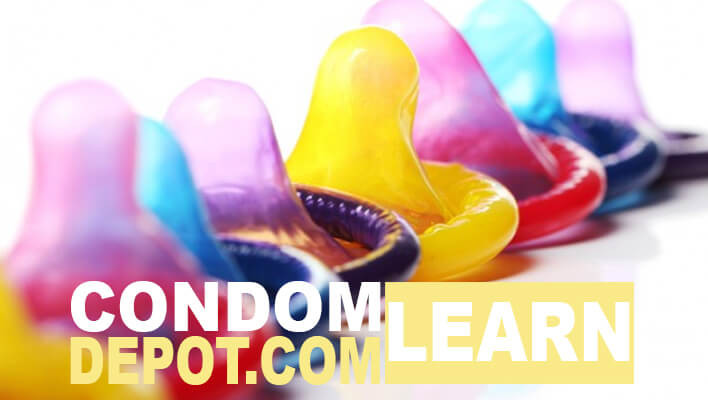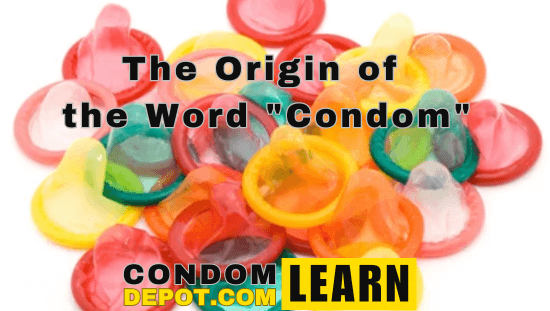Learn

Top 5 Condom Myths Debunked
Top 5 Condom Myths Debunked
We’ve all heard the many myths out there surrounding condoms. Watch out, rubber rumor mill, ‘cause I’m about to bust these top five condom myths!Myth #5: Silicone-Based Lubricants Damage Latex Condoms
Myth Busted: We constantly get calls and questions about the compatibility of silicone-based lubricants with latex and non-latex condoms. Silicone-based lubricants DO NOT damage any condoms on the market. They do just the opposite, by reducing the heat caused by friction and DECREASING the likelihood of a condom breaking!
In fact, the only thing that silicone-based lube will damage are silicone-based sex toys and fabrics. Silicone erodes materials based on grade, meaning a high quality silicone-based lubricant will eat away at a lesser quality silicone-based sex toy. If you’re unsure, try a test spot before ruining your toy. This super slippery lube can also stain certain fabrics. Learn how to remove these stubborn silicone-based lube stains here.
Oil-based lubricants like coconut oil, masturbation creams, lotions, conditioner, petroleum jelly, shortening, baby oil, etc. absolutely WILL damage latex and polyisoprene condoms, and should NEVER be used in conjunction with a latex dental dam or condom. There is no oil in most silicone-based lubricants. When in doubt, always check the ingredients.
| Related Articles:
• Why Do Condoms Break?
• Can I Use Coconut Oil as a Lubricant?
Myth #4: All FDA Approved Condoms Protect against STDs/STIs
"Trojan NaturaLamb condoms do not protect against STDs/STIs."
Myth Busted: OK, so nearly every condom approved by the FDA protects against both unwanted pregnancies and STDs/STIs, but there are still exceptions.
Condoms made from natural membranes, such as NaturaLambs by Trojan, have pores in the material which are large enough for viruses, parasites and bacteria to transmit back and forth from partner to partner. These health-harming transmissions are most commonly known as STDs/STIs.
Lambskin condoms have been used as a form of contraception since the 1600s, but this was way before the days of government-regulated health devices and sex-related health threats such as HIV/AIDs. Therefore, if STDs/STIs are a concern in your relationship(s), STEER CLEAR of any condom made from an animal membrane!
Myth #3: Condoms Are Only for PIV (Penis-in-Vagina) Sex
Myth Busted: Hopefully we’re all clear on this-- PIV (penis-in-vagina) sex is how babies are made. But, while unprotected anal, manual and oral sex (as well as sharing sex toys with a friend or partner) won't get anyone pregnant, they're ALL ways to catch and/or spread STDs/STIs.
Barriers and anal lubes for anal sex are extra important because the anus isn’t self-lubricating, which means tears in the anal lining are common. These microtears create open pathways to the bloodstream. Even if no STDs/STIs are present in the traditional sense, bacteria from the anus can easily enter into the male urethra and cause urinary tract or bladder infections.
Using flavored condoms for fellatio, and dental dams for cunnilingus and anilingus, will protect you both from diseases, parasites and infections.
Thinking of using a sex toy or inserting any other porous object? Slap a condom on it, and it’s instantly non-porous. Hooray! Or, tired of jacking it and then having a big mess to clean up? Use a condom for easy clean up!
Myth #2: Thinner Condoms Are More Likely to Break
Myth Busted: People assume thicker, extra strength condoms are safer than extra sensitive or ultra thin condoms. This simply isn’t true. Did you know that the thinnest condoms, like the Okamoto .004 and the thickest condoms like Trustex Extra Strength both have to undergo the exact same electronic testing before being approved for sale by the FDA?
That’s right.They were both put to the same test, and they both passed. This means they are EQUALLY SAFE.
Myth #1: Condoms Are One-Size-Fits-All
Myth Busted: If I’ve got one pet peeve in the world of safer sex education, it’s proper condom sizing. It is so incredibly important, yet so commonly a source of confusion, ignorance and stress. I’ve got over two decades of condom use experience and I’ve hand measured every single brand and style of condom in our expansive condom warehouse. Take it from me-- condoms come in an extremely wide range of widths, lengths and shapes.
If you break condoms, lose condoms inside your partner, they slide down your shaft, strangle you or simply find condoms to be uncomfortable, then guess what? You’re using the wrong condom size! Wearing the wrong sized condom is a recipe for disaster and can very easily lead to unwanted pregnancy and/or STDs/STIs. It doesn’t have to be this way!
To clear the myth once and for all, I made this Condom Size Chart to document the sizing measurements I collected. There are no normal sized or regular sized Trojan or Durex condom, people. Look at the numbers. They vary.
Nearly every complaint we hear from customers have to do with an improperly fitting condom (too short, too long, too narrow, too wide). Do yourself, your future reproductive health and your partner a favor by measuring your erection and consulting the size chart before it’s too late, because condoms are DEFINITELY NOT one-size-fits-all.










